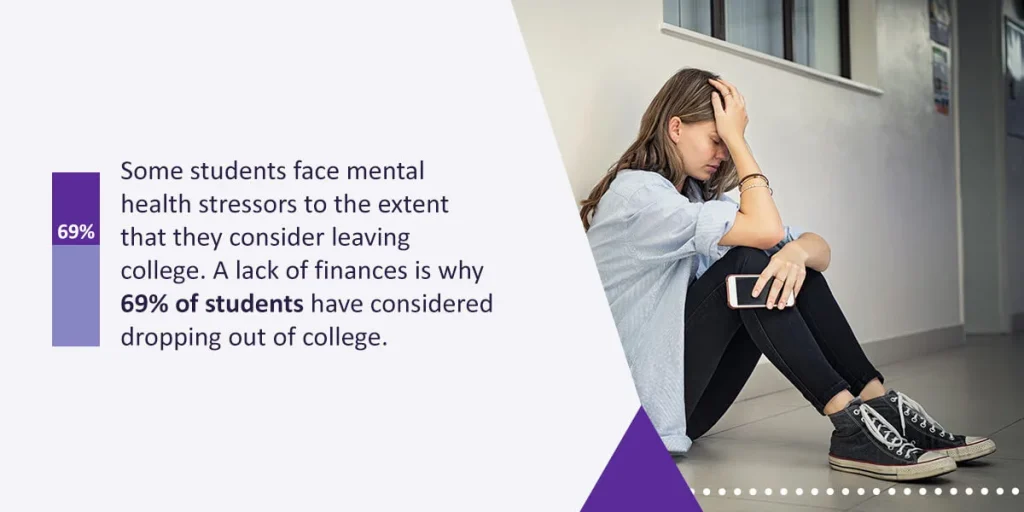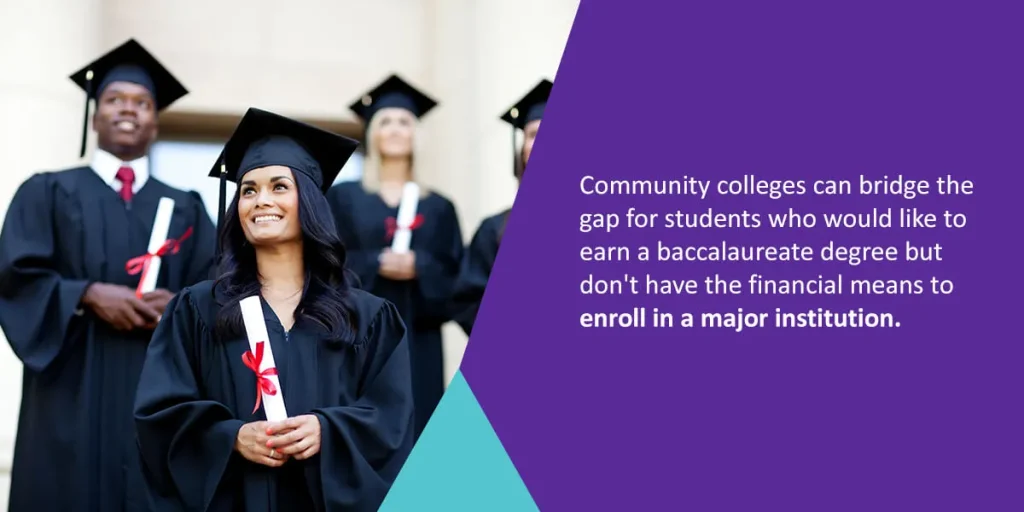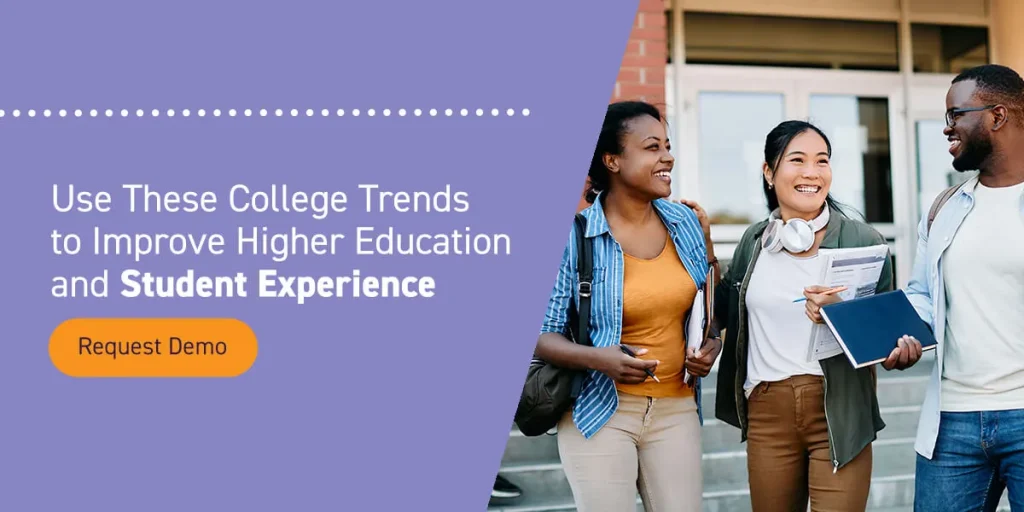




Community colleges play an essential role in higher education. Enrollment trends in higher education showed that first-year undergraduate enrollment across schools in 2022 increased by 4.3% over 2021, with community colleges seeing the most significant growth in first-year students. In 2023, as student admissions begin to stabilize, there are emerging trends that your college can leverage to navigate the changing landscape.
The needs of students have changed over the past two years, and colleges must be able to stand out when compared with other institutions. Colleges must get ahead of these trends to improve enrollment and enhance the student experience.
Post-pandemic, many colleges jumped back to in-person learning, but students are looking for the option of online learning too. A 2022 national survey showed that the number of high school juniors and seniors intending to study online more than doubled.
Increasingly, online education is becoming an attractive option for students who need flexibility. Some students have jobs and can only study online between working hours. Online learning lets parents stay home with their children and still take classes. Distance learning also makes higher education more accessible for students unable to attend in-person classes for financial reasons.
By offering online learning, your community college can appeal to a greater demographic of students. Online learners aren’t as visible to colleges as in-person students. This lack of visibility means that intentionality is vital when it comes to communication with students. Staying in tune with your students by seeking constant feedback, tracking their progress, and providing the same support as you do in person is crucial for an effective online learning environment.
Online learning is new territory for many colleges and lecturers. Through creativity, careful planning, and a foundation of best practices, your college can teach online classes that engage students and help them thrive.

Today’s students seek a college that will listen to them and meet their needs. Inclusivity, belonging, and an authentic concern for the needs of students are at the forefront of this new era.
Some students face mental health stressors to the extent that they consider leaving college. A lack of finances is why 69% of students have considered dropping out of college. Many students need help to meet basic needs such as housing, food, healthcare, and childcare. The financial lack often leaves them no option but to choose between a higher education or life’s necessities. Students of color and low-income students are more likely to face these challenges.
To stabilize enrollment, community colleges must invest in the student’s basic needs. Across the country, colleges invest in emergency assistance and partner with community organizations that provide housing, food, and other support for needy students. They are able to directly assist students through financing from government programs, grants, and partnerships.
Providing adequate student care starts with awareness. When your support staff talks to students about their classes and academic performance, it’s also an opportunity to ask them about their living situation and finances. By actively and intentionally connecting with students to understand their needs, your college can respond appropriately and develop the necessary resources to meet them.
While colleges have seen a decrease in enrollments from recent high school graduates and adults, high school students make up most of community college enrollment. The 2022 community college enrollment trends showed that dual-enrolled high school students made up 11.5.% of registrations and will continue to make up a more prominent factor in college enrollments. High school students can play a big part in stabilizing college admissions because they are more likely to remain students after graduating high school.
To improve the likelihood of high school students enrolling after graduation, your college must intentionally partner with high schools and intensify efforts to retain students. There are many options for students after high school — they could choose another college or decide to enter the workforce. Working alongside them from high school can increase the likelihood of them remaining in your college.
Dual enrollment also allows colleges to help prepare high school students to work at a college level. Students get a head start on their credits, making it easier for them to complete their degrees in the future.
Colleges currently need help with staff retention. The shortage of student support professionals makes it difficult for colleges to address enrollment challenges and provide students with personalized support. The Great Resignation saw a departure from the workforce catalyzed by factors such as burnout, flexibility, remote working options, and retirement. Colleges need to address these factors and consider them in their staff culture to keep the staff from resigning and attract new hires.
Introducing new tech is one great way to solve your hiring woes. By taking advantage of technological advances, your college can reduce the workload on staff. Adopting technology software can help automate scheduling processes, eliminate repetitive, manual tasks, and facilitate remote working. This approach frees your staff to spend more time focusing on students.
Ease of access to information is essential for students. They need to be able to find information when they need it. Eliminating data silos and improving transparency creates a more productive environment for students.
Implementing cloud-based solutions is a great way for your college to securely store data and improve recruitment, admissions, and overall student experience. Students today are tech-savvy and expect a technologically advanced experience as they access information online and attend classes. Cloud technology is a worthy investment for longevity to stand out from other colleges and deliver for students’ needs.
Processes such as updating information, submitting documents and assignments, and getting approvals should all be automated. Many manual processes could be more efficient and enhance a student’s experience. Automation streamlines workflow for students and improves their communication with staff. Data automatically flows from different systems without the need for human intervention. Automation frees up time for faculties to focus on work that impacts students most and reduces the likelihood of errors prone to manual work.
By taking a modern and technologically advanced approach, your college may see an increase in enrollment and student retention.
Data gives colleges an indication of how they are serving students and indicates areas of growth and improvement. Increasingly, colleges are analyzing data in the areas of recruitment, enrollment, and retention. Having insight and visibility into processes gives your college the information you need to improve functions and deliver a modern student experience. Introducing a new campaign is a good start, but how do you know if they achieve the desired results? Measuring and tracking new systems and changes gives you insight into whether they are making an impact.
Your college can get a holistic view of student performance and experience by leveraging student data. Insights on past data and current statistics can help you to predict future trends. Student data also holds colleges accountable for prioritizing student needs over the college’s outcomes. Investing in collecting, analyzing, and leveraging this data is significant. Your college will need tech staff and sophisticated infrastructure to process large amounts of data. This investment is worthwhile to secure longevity and resilience in a technologically advanced world that is only continuing to accelerate.

While community colleges have traditionally been two-year institutions, some now offer bachelor’s degrees. In 2020, community colleges awarded 21,348 bachelor’s degrees. Certain states introduced the change in response to the teacher shortage, addressing acute areas of need in primary education, particularly in the maths and sciences.
Community colleges can bridge the gap for students who would like to earn a baccalaureate degree but don’t have the financial means to enroll in a major institution. Some suggest that certain colleges don’t have the means to provide the quality of education required for these degrees. Before introducing baccalaureate degrees, it is essential that you adequately plan, prepare, and invest in skilled staff so that you can serve students.
Partnerships between community colleges and four-year institutions are a growing trend. In this partnership, a community college feeds students to four-year institutions and helps transition students who would like to transfer. This system helps make the transition as smooth as possible for the student. Students can easily transfer credits, and the costs of admissions are lower. In this partnership, community college students have preferential treatment in the enrollment process.
For example, if a student-first applied to a four-year institution but could not meet admission requirements, they can enroll at the partner community college. If the student can meet the requirements, the community college will then facilitate a transfer to the partner four-year institution. This type of partnership enables underserved students the opportunity to access affordable, high-quality education. By partnering with institutions, your college can increase enrollment and appeal to more students who want to pursue four-year degrees.
Highly skilled technicians, programmers, and non-technical IT support personnel are in high demand in the job market. Potential employers are more interested in a prospective employee’s skills to complete these roles rather than the type of degree they have. Employers are looking for prospective employees with certifications showing they have learned and mastered the skill set required to complete the job.
Businesses are partnering with colleges to create curricula that teach students how to use their products and systems. While employees usually learn these skills when they start a job, businesses leverage these partnerships to train students to become potential employees while they are still in college. In 2023, companies are seeking students who have mastered these hard skills:
Community colleges face competition in job training from private trade schools. By introducing credential programs, your college can effectively partner with businesses to ensure students are ready and able to succeed in the job market. Higher education is an investment for students. They seek out colleges that can equip them for a successful career. Partnering with businesses can help your college secure employment for students once they graduate.

Businesses and governments have prepared for globalization, and we are also starting to see this trend in education. Employment opportunities are expanding beyond our borders. It’s essential that colleges prepare students to succeed in work environments that may take them abroad. As working environments develop globally, students may also work with people from different countries and backgrounds. Training methods that can equip students for global work environments include:
As the world is rapidly changing, global competence education will empower students to work successfully with people of different backgrounds, cultures, and beliefs. Colleges must adopt training methods that teach students about more than their immediate environment and expose them to global issues and affairs.
Competency-based education (CBE) is on the rise. An education system that takes this approach allows students to learn at their own pace and style. Mastering the subject matter takes preference over receiving credits based on the time spent in the classroom. For example, instead of waiting for months, students can take an exam as soon as they are ready and earn their credit if they pass. CBE gives students with more experience the ability to speed up their learning. In CBE, these four practices are the main focus:
While CBE may seem like a big step away from traditional teaching methods, there are several benefits for students and colleges:
Each college has its unique approach to implementing a CBE program. Your college can either develop its own system or adopt an existing one from another institution or government agency. Whatever you choose, the data will ultimately help determine the program’s success. You can refine the program by tracking, collecting, and analyzing the data to ensure its success.

The world is changing. While enrollment rates are beginning to steady, colleges must get creative and develop innovative solutions to attract students and stand out from other institutions. Students seek community colleges that offer a holistic experience and prepare them for professional success. Technology plays a significant role in streamlining processes and enhancing education in colleges. Colleges must invest in technology that enables quality online learning, facilitates data analysis, and modernizes processes.
Solutions from Watermark can enable community colleges like yours to drive essential institutional improvements and provide a better environment for the students of tomorrow. To learn more about our solutions, request a free demo.

























































































































































































































































































































































































Submit this form to schedule a meeting with one of our reps to learn more about our solutions. If you need customer support instead, click here.